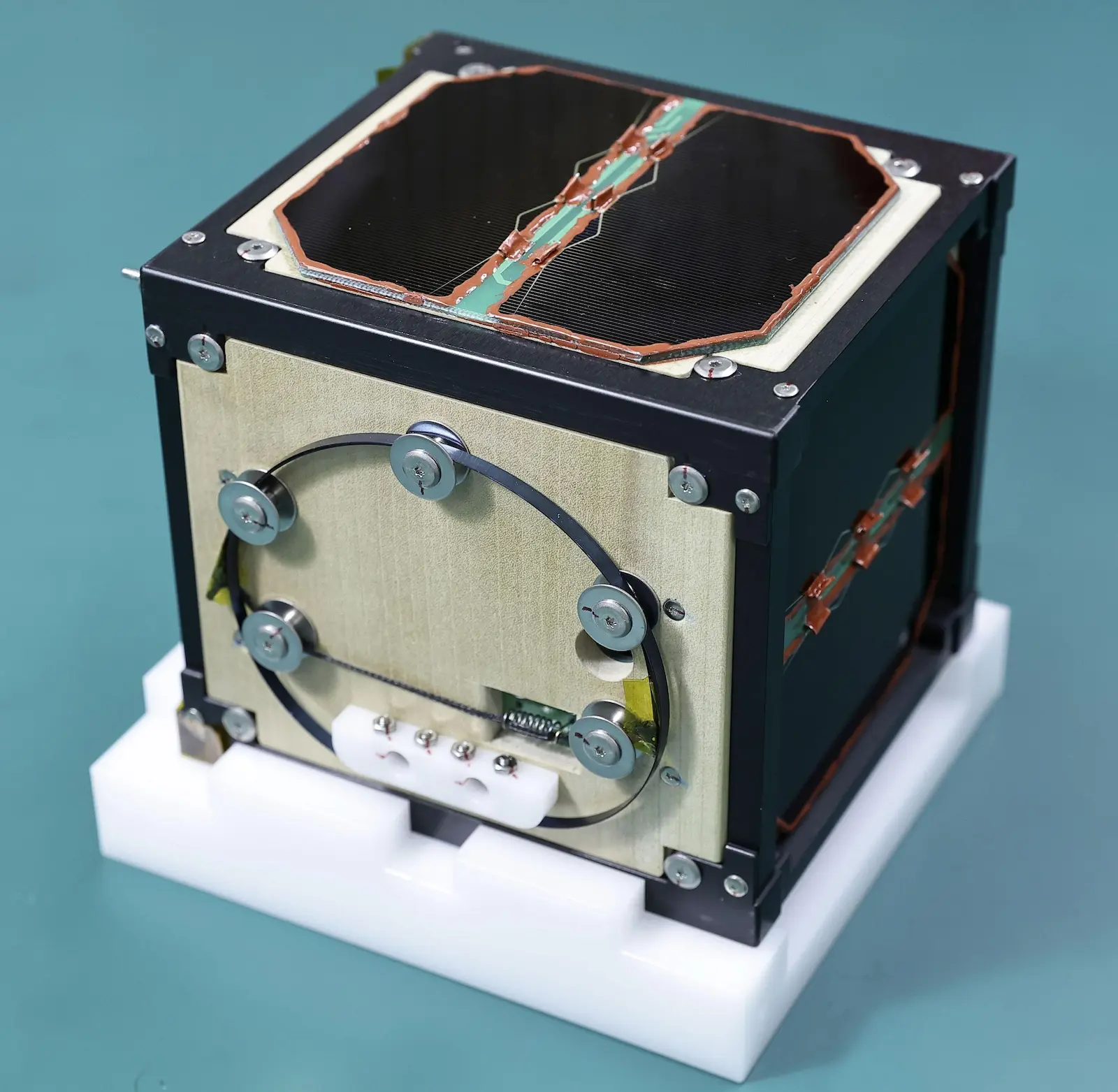Japanese researchers said Tuesday that they have successfully constructed the world’s first wooden satellite, with the tiny cube-shaped object expected to be sent into space aboard a SpaceX rocket launched from the United States, possibly in September.
“LignoSat,” a blend of the words ligno, a prefix meaning wood, and satellite, is the outcome of about four years of development efforts by a team involving Kyoto University and Sumitomo Forestry Co, with the aim of harnessing the environmental friendliness and low cost of wood in space development.
Wooden satellites are seen as better for the environment when burning up upon reentering the Earth’s atmosphere at the end of their operation, compared to conventional satellites made of metals, as they can create alumina particles, which may adversely affect weather and communications, according to the team.
The latest development is “an extremely valuable step for both the space and wood industries,” Kyoto University and the Tokyo-based wood products company said in their joint press release, noting that it will help “open up the possibilities of the use of wood, which is a sustainable resource.”
LignoSat is a 10-centimeter cube made from 4 to 5.5 millimeter-thick magnolia wood panels, with a frame partially constructed from aluminum. It has solar panels affixed to some sides and weighs roughly 1 kilogram.
It is built based on a traditional Japanese technique that does not use any screws or adhesive materials.
The team said it has confirmed the durability of the wooden material even in the harsh environment of outer space.
“We would like to create a satellite, including the electronic substrate portion (contained inside), entirely made from wood in the future,” said Takao Doi, an astronaut serving as a program-specific professor at Kyoto University.
From the official site, it looks like it missed the 2021 launch date and there haven’t been updates since.



